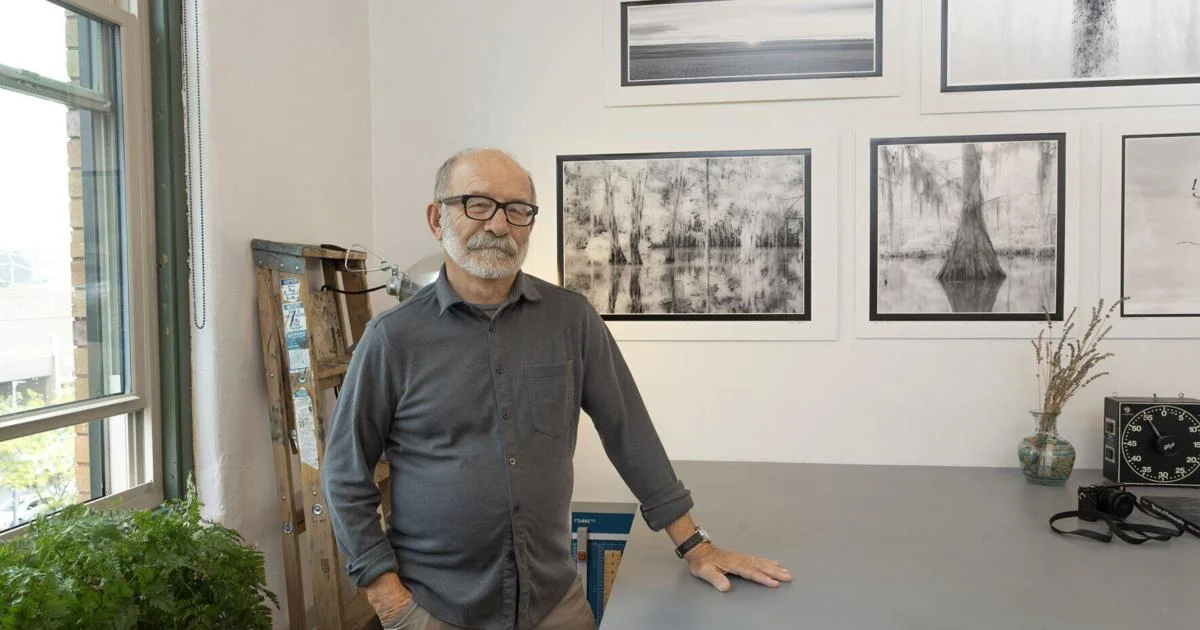
You’re going to want to visit the Windy Flats Gallery just to be able to look out the window.
The gallery, which is opening for the first time during the October ArtWalk on Friday, is on the third floor of the Oliver Building at 2702 Montana Ave. The Oliver Chilled Plow Works, who built the big brick building in 1910, were one of the nation’s most prominent farm implement dealers. Their former warehouse still has some of that turn-of-the-century industrial charm, highlighted by the massive, ceiling-high window that dominates the northern end of Windy Flats. They don’t make them like this anymore.
But take a peek through that Windy Flats window and you’ll wish they did. The DoubleTree, still the world’s largest load-bearing brick masonry building, is front and center but peer past it and you’ll see the old First Avenue Post Office, Billings’ former industrial core, all the way to the Rims and beyond. It’s like watching the story of Billings unfolding right before your eyes.
That’s a heck of a place to put an art gallery. So the art on display better measure up. And thanks to Edward Barta, it does. This is his space, and he curated the art on display here, including ceramic pieces by George Kelting, wild metal sculptural work by Beau Malin and paintings by Brownie Snyder.
But the heart of Windy Flats is Barta’s photos. He takes large scale, black and white shots, full of detail and the smudges and smears of everyday life. Photography is often about documentation, but the greats, Barta included, can find out a way to raise that into an art form.
And what photos they are. This guy could give Johnny Cash a run for his money. Not only has Barta he also been everywhere — he’s got a photo to prove it.
Barta, who served in the Peace Corps and has traveled all over the world for work and pleasure, has photos from Poland, Tunisia, Kuwait, Eastern Europe, northern Africa, all over. Surveying his portfolio makes you feel like you’re momentarily living another person’s life.
“I’ve gotten into a little bit of trouble with my camera,” Barta noted, and stick around him very long and you’ll start hearing about those troubles.
There was the time he was held for questioning by Rwandan military members, shortly after that country’s genocide in 1994, for taking photos of what he later learned was a prison.
While living in Kuwait, he was stopped twice, months and miles apart, by the same military leader, once for taking photos along the coast, near oil tankers, and another time for photographing a group of Bedouin sheep herders who happened to be close to an oil storage tank.
At check points, when asked to show his film, he’d have to find a dark room to show any interested personnel that the mysterious thing he was carrying in big lead bags was just film.
“Traveling has been a leap of faith,” Barta explained.
Listen now and subscribe: Apple Podcasts | Google Podcasts | Spotify | RSS Feed | SoundStack
He started on his leaps early. Barta moved a lot as a kid, but he went to high school in Phillipsburg, graduating in 1969. Nowadays Phillipsburg is a tourist hub, a destination for celebrity weddings and a picturesque town full of candy shops and breweries.
But it wasn’t always that way. Phillipsburg, like so many places in Montana, was built on mining, and when Montana’s economy stagnated after World War II, it became a sort of walking ghost town.
In 1972, three years after Barta graduated, the legendary poet Richard Hugo published “Degrees of Gray in Phillipsburg.” The poem, one of the great Montana masterpieces, is a searing and bleak portrait of a place where “The principal supporting business now / is rage,” full of “hotels / that didn’t last, bars that did,” peopled only by old men who “still laugh / although his lips collapse,” waiting until they can finally go to sleep and not wake up. Hugo’s Phillipsburg doesn’t really sound like a place where Scarlett Johannsen would want to get married.
Barta never worked in the smelter or the mines, but he did put time in at the lumber mill, watching how town would shift from one side, which had the sawmill and the grocery stores, to the other, with the bars, every day at 5 p.m.
“It’s a beer drinking sort of town,” Barta remembered.
After Phillipsburg, Barta studied business administration at Montana State University in Bozeman. Unsure of what his next steps could be, he enrolled in the Peace Corps, served in the Philippines and eventually wound up in Billings, where he got a master’s in education.
He bounced from spot to spot, country to country, eventually taking a gig as a bank examiner for the state. That took him to lots of small Montana towns, and connected him with a crew that included a photographer.
Wanting in on the fun, Barta bought his first camera, a 35mm Olympus with a “beautiful black body” that he still has. Wanting to get above amateur status, he took a class from the Missoula photographer Lee Nye, whose stark, black and white portraits of local barflies are still an integral part of Missoula’s story.
Nye, along with a lifelong fascination with Ansel Adams, convinced Barta to stick to black and white film.
“People ask if I’m ever going to do color,” Barta said. “But no, you graduate to black and white.”
For a long time Barta was always armed with a Wista 4×5 Field Camera, which looks like a sort of working antique. He shoots on digital now, but still only in black and white, attracted to the abstraction and artiness only that medium can really provide.
Windy Flats had its first life in Nye, where Barta and his wife have a cabin. But after he closed it down in 2023, he’s been searching for another way to share this side of himself. This iteration of Windy Flats won’t keep regular hours, but he’s envisioning a couple big shows a year combined with some smaller, invite-only events, like house concerts and little pop-ups.
And you’ll want to go to one, because Windy Flats gives you a chance to look at photos, and, even better, an opportunity to talk to the guy who took them.
Sometimes you go to an art gallery to look at the art, sometimes to talk to the artist and sometimes just to look out the window. Windy Flats gives you the rare opportunity to do all three.
You must be logged in to react.
Click any reaction to login.
Love
0
Funny
0
Wow
0
Sad
0
Angry
0
Stay up-to-date on what’s happening
Receive the latest in local entertainment news in your inbox weekly!
* I understand and agree that registration on or use of this site constitutes agreement to its user agreement and privacy policy.
Jake Iverson
Get email notifications on {{subject}} daily!
Your notification has been saved.
There was a problem saving your notification.
{{description}}
Email notifications are only sent once a day, and only if there are new matching items.
Followed notifications
Please log in to use this feature
Log In
Don’t have an account? Sign Up Today



